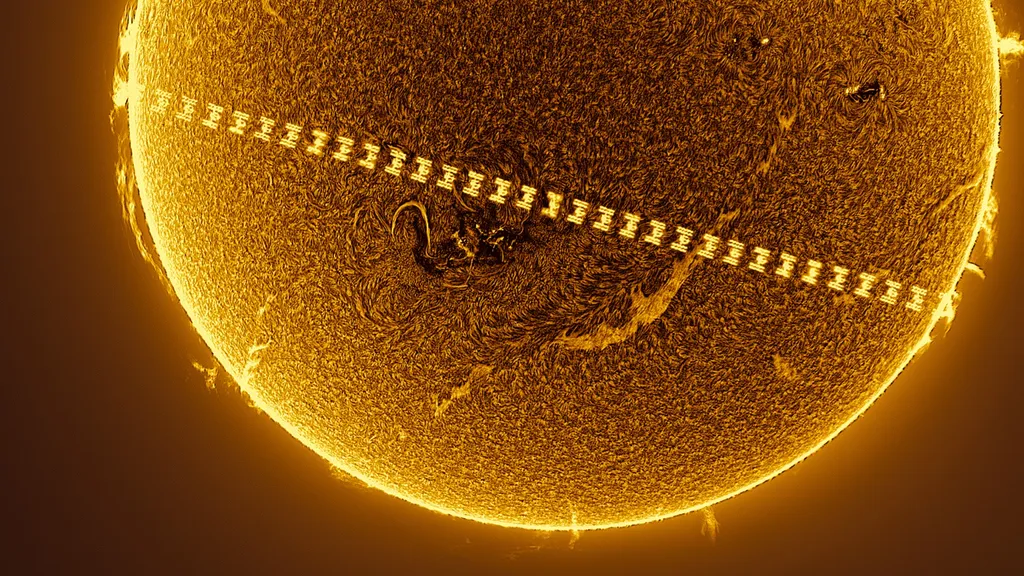Innovative maps of the magnetic field in the Sun’s atmosphere emerge
- September 22, 2024
- 0
The most powerful solar telescope in the world has given us the key to unlocking the magnetic mysteries of the Sun. Now the solar telescope is owned by
The most powerful solar telescope in the world has given us the key to unlocking the magnetic mysteries of the Sun. Now the solar telescope is owned by

The most powerful solar telescope in the world has given us the key to unlocking the magnetic mysteries of the Sun. Now the solar telescope is owned by Daniel K. Inouye Solar Telescope mapped the magnetic fields in the solar corona, a burning hot region similar to the atmosphere. This information is crucial to understanding solar flares, sunspots, and the perplexing mystery of why the Sun’s atmosphere is hotter than its “surface,” known as the photosphere.
“Inouye’s success in mapping the Sun’s coronal magnetic fields is a testament to the innovative design and capabilities of this groundbreaking, unique observatory,” said Tom Schad, an astronomer at the National Solar Observatory (NSO) of the U.S. National Science Foundation.
“This breakthrough promises to greatly improve our understanding of the solar atmosphere and its effects on our Solar System.”
The Sun’s surface is very stormy and very bright, and is home to many high-energy shenanigans. We often see the aftermath of these shenanigans, which include explosions and coronal mass ejections that hurl billions of tons of solar particles into the Solar System, but the finer details of the processes that cause them are much harder to figure out.
Magnetic fields play a major role in solar flares. Magnetic field lines are constantly appearing, mixing, stretching, breaking, and reconnecting. Sunspots are regions in the photosphere where magnetic fields are particularly strong, and when magnetic field lines break and reconnect, the process creates a powerful burst of energy and heat that can launch solar material into flight.
However, we often cannot get a clear view of the corona. When during a solar eclipse
When the Moon eclipses the Sun, we can see stripes and other coronal phenomena in impressive detail; this has inspired the design of some solar instruments, including a piece of equipment known as a coronagraph, which blocks out the solar disk so we can see the corona clearly.
One such telescope is the Inouye, which, combined with its high-resolution capabilities, makes it a powerful tool for studying processes in the Sun’s atmosphere that are hard to see.
To image magnetic fields in the solar corona, the telescope used its cryogenic near-infrared spectropolarimeter to detect the Zeeman effect, which is when light from a particular line of the spectrum splits into multiple lines in the presence of a magnetic field. Scientists have previously tried to observe the Zeeman effect on the Sun, but with limited success.
Using Inoue, Schad and his team obtained clear indications of the Zeeman effect in the spectral lines emitted by iron atoms in the solar corona. Furthermore, they were able to observe polarization, providing an unprecedented view of the coronal magnetic field.
This is just the first step. The researchers say future observations and analysis will improve our understanding of the physics of the solar atmosphere and therefore space weather caused by powerful explosions that can be felt on Mars and beyond.
“Mapping the strength of the magnetic field in the corona is a fundamental scientific breakthrough, not only for solar research but for astronomy in general,” says NSO director astronomer Christoph Keller, who was not involved in the research.
“This is the beginning of a new era in understanding how the magnetic fields of stars affect planets here in our solar system and in the thousands of exoplanet systems that we currently know of.” The article was published in: Science Developments.
Source: Port Altele
As an experienced journalist and author, Mary has been reporting on the latest news and trends for over 5 years. With a passion for uncovering the stories behind the headlines, Mary has earned a reputation as a trusted voice in the world of journalism. Her writing style is insightful, engaging and thought-provoking, as she takes a deep dive into the most pressing issues of our time.